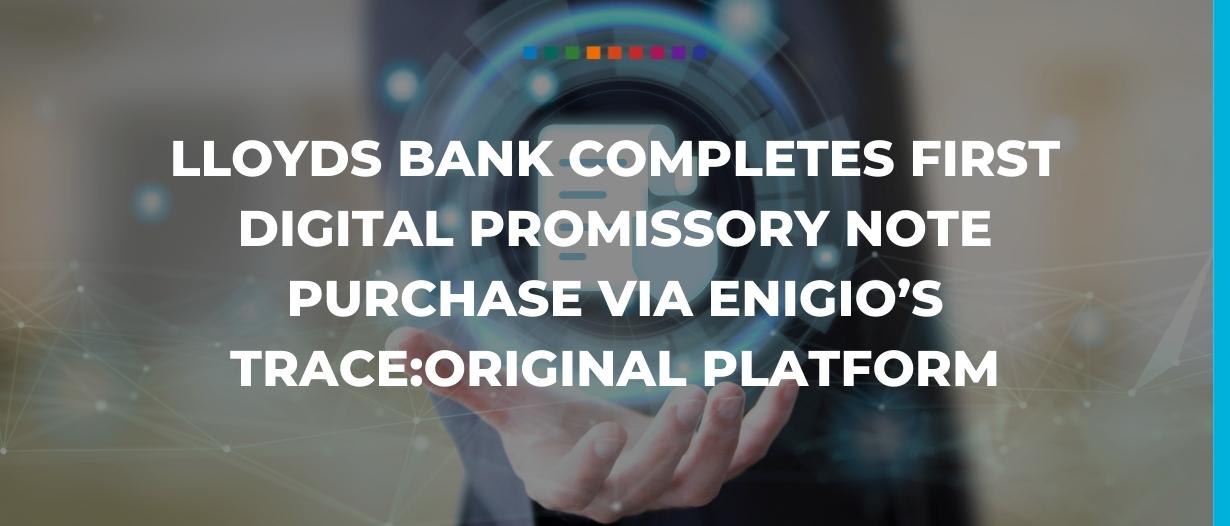Lloyds bank announced that they reached a key milestone in digitising trade by completing the UK’s first digital promissory note purchase.
The transaction was completed using Enigio’s trace:original technology, in accordance with the International Trade and Forfaiting Association’s (ITFA’s) dDOC specification and Digital Standards Initiative (DNI).
What is trace:original?
trace:original provides banks, corporates, logistic providers, and others, the benefits of paper documents without the need for joining a specific ecosystem or closed platform.
The trace:original document is a digital original document that can be updated, sold, freely transferred, and invalidated.
The document comes in a PDF format and can contain attachments, any data standards––as well as electronic signatures––and electronic seals.
This will make the document fully digitally interoperable, without the need for API connections. It is safe and secure by design and can be read by both humans and machines.
It was the international law firm Sullivan in London which advised Lloyds Bank on the template structure.
What does this mean for trade finance?
This initiative showcases how digitisation of key trade documents, such as negotiable instruments and documents of title, is possible through using trace:original.
On a larger scale, this illustrates how the digitisation of trade––through focusing on documents––has progressed.
This development will be further boosted by UK’s upcoming passing of the electronic trade documents bill, in addition to the global adoption of the UN’s model law for electronic transferable records.
The trace:original solution can be used not only for promissory notes but also for other types of documents such as; bills of exchange, bills of lading, bank guarantees, warehouse receipts, certificates etc.
CEO of Enigio Patrik Zekkar, said, “This is an important confirmation of the potential for digitalisation.”
He added, “Trace:original manages the transferability, inclusion aspects, and interoperable requirements.
The next step within the field of financial and transport document digitisation will be updating the management of end-to-end supply chain documents.”

































